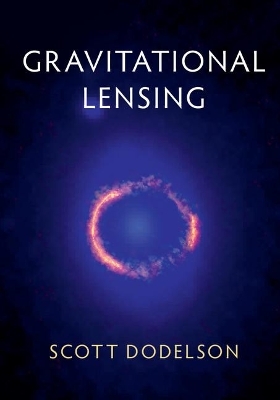
Gravitational Lensing
Seiten
2017
Cambridge University Press (Verlag)
978-1-107-12976-4 (ISBN)
Cambridge University Press (Verlag)
978-1-107-12976-4 (ISBN)
Using little general relativity and no higher level mathematics, this text presents the basics of gravitational lensing, focusing on the equations needed to understand the phenomena. It then applies them to an array of topics, so that students and researchers may quickly grasp the basics and the important issues.
Gravitational lensing is a consequence of general relativity, where the gravitational force due to a massive object bends the paths of light originating from distant objects lying behind it. Using very little general relativity and no higher level mathematics, this text presents the basics of gravitational lensing, focusing on the equations needed to understand the phenomena. It then applies them to a diverse set of topics, including multiply imaged objects, time delays, extrasolar planets, microlensing, cluster masses, galaxy shape measurements, cosmic shear, and lensing of the cosmic microwave background. This approach allows undergraduate students and others to get quickly up to speed on the basics and the important issues. The text will be especially relevant as large surveys such as LSST and Euclid begin to dominate the astronomical landscape. Designed for a one semester course, it is accessible to anyone with two years of undergraduate physics background.
Gravitational lensing is a consequence of general relativity, where the gravitational force due to a massive object bends the paths of light originating from distant objects lying behind it. Using very little general relativity and no higher level mathematics, this text presents the basics of gravitational lensing, focusing on the equations needed to understand the phenomena. It then applies them to a diverse set of topics, including multiply imaged objects, time delays, extrasolar planets, microlensing, cluster masses, galaxy shape measurements, cosmic shear, and lensing of the cosmic microwave background. This approach allows undergraduate students and others to get quickly up to speed on the basics and the important issues. The text will be especially relevant as large surveys such as LSST and Euclid begin to dominate the astronomical landscape. Designed for a one semester course, it is accessible to anyone with two years of undergraduate physics background.
Scott Dodelson is a scientist at Fermi National Accelerator Laboratory, Batavia, Illinois and at the University of Chicago. He has written more than 180 research papers on the connections between physics and astronomy, and is the author of Modern Cosmology (2003), a standard graduate textbook. He has recently taken leadership roles in surveys that employ gravitational lensing as a tool to get at basic physics.
1. Overview; 2. Deflection of light; 3. Multiple images; 4. Magnification; 5. Microlensing; 6. Weak lensing: galaxy shapes; 7. Mass from shapes; 8. Cosmic shear; 9. Lensing of the cosmic microwave background; Appendix A. Numbers; Appendix B. Lensing formulae.
| Erscheinungsdatum | 04.06.2017 |
|---|---|
| Zusatzinfo | 14 Halftones, color; 30 Halftones, black and white; 57 Line drawings, black and white |
| Verlagsort | Cambridge |
| Sprache | englisch |
| Maße | 178 x 253 mm |
| Gewicht | 650 g |
| Themenwelt | Naturwissenschaften ► Physik / Astronomie ► Astronomie / Astrophysik |
| ISBN-10 | 1-107-12976-1 / 1107129761 |
| ISBN-13 | 978-1-107-12976-4 / 9781107129764 |
| Zustand | Neuware |
| Haben Sie eine Frage zum Produkt? |
Mehr entdecken
aus dem Bereich
aus dem Bereich
Grundlagen, Anwendungen in Astrophysik und Kosmologie sowie …
Buch | Softcover (2022)
Springer Spektrum (Verlag)
49,99 €
die Geschichte und Erforschung unserer Galaxie
Buch | Hardcover (2023)
C.Bertelsmann (Verlag)
30,00 €
Von Hubble-, James-Webb- und anderen Großteleskopen bis zu …
Buch | Softcover (2024)
Springer (Verlag)
22,99 €


